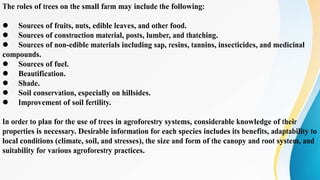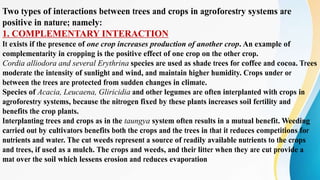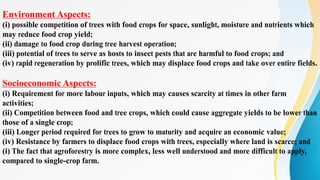The document provides an extensive overview of agroforestry, highlighting its definition, classification, and benefits as a sustainable land management system that integrates agricultural and forestry practices. It discusses the various types of agroforestry systems based on structure, function, ecological spread, and socio-economic nature, emphasizing the importance of managing interactions between trees, crops, and animals for enhanced productivity and environmental benefits. Additionally, it outlines the attributes of productivity, sustainability, and adoptability that characterize successful agroforestry systems.





















































